A year-and-a-half ago I started working on an old Jeffrey pine. The first step was to help the tree regain vigor (see “Repotting a Jeffrey Pine” for details). Here’s what the tree looked like after repotting in March, 2018, followed by a photo of what it looks like today.
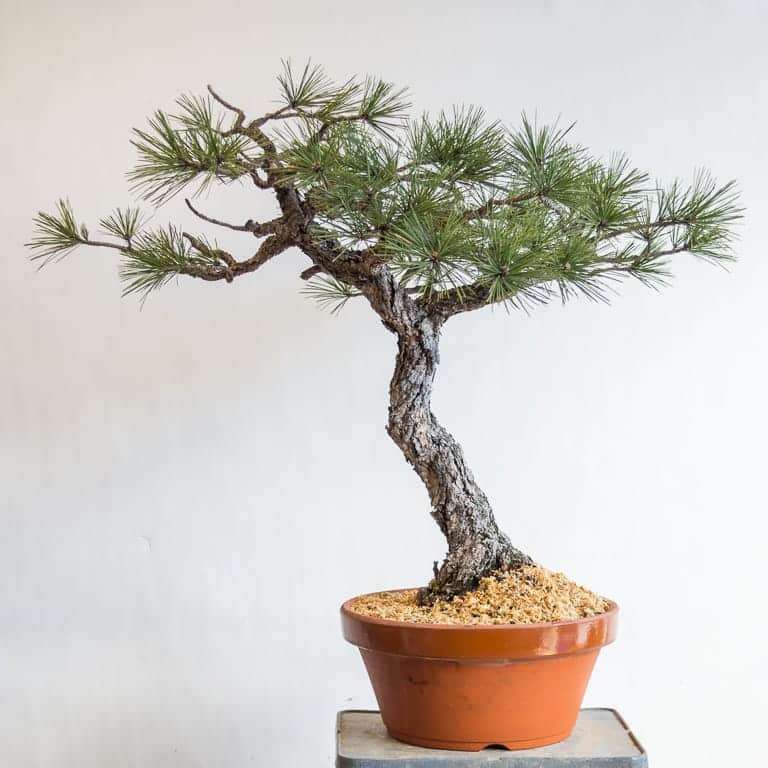
Jeffrey Pine – March, 2018
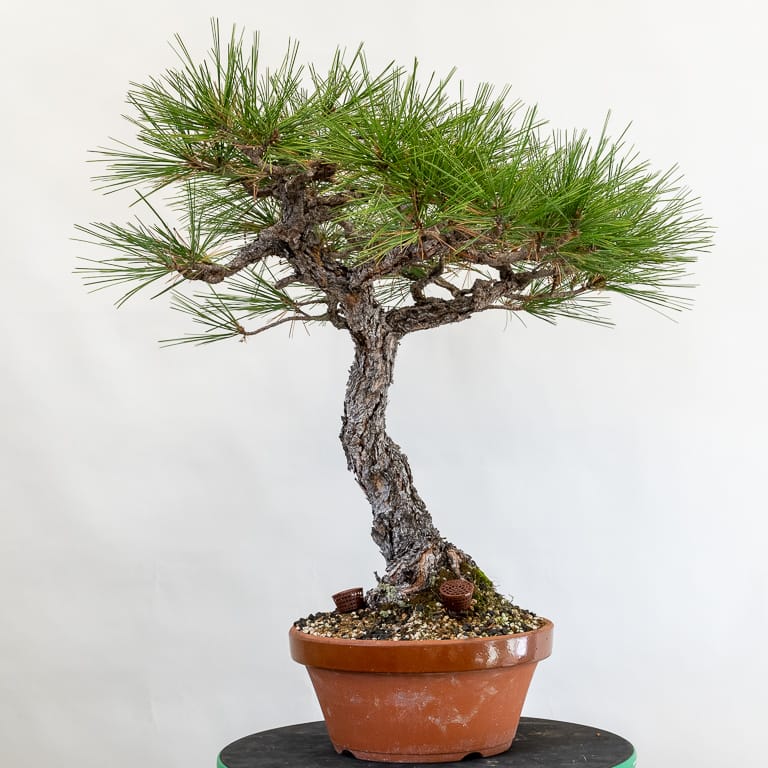
September, 2019
As you can see, the tree has come a long way from its relatively weak state last year. And as the older needles are starting to brown, it’s time for fall work.
Because this tree is still in recovery, the work will be simple: remove the third year needles. What do these look like? Here’s a comparison of the needles that grew this year, last year, and those that grew back in 2017.

Third-year needles (2017), last year’s needles (2018), and the current-year needles (2019)
Needle length is an important signal of health in pines. The longer the needle, the healthier the pine. This is the first sign that the tree is gaining vigor.
Another sign of vigor is the size of the terminal buds. Bud size reflects the tree’s bet on how much foliage it can produce the following year.
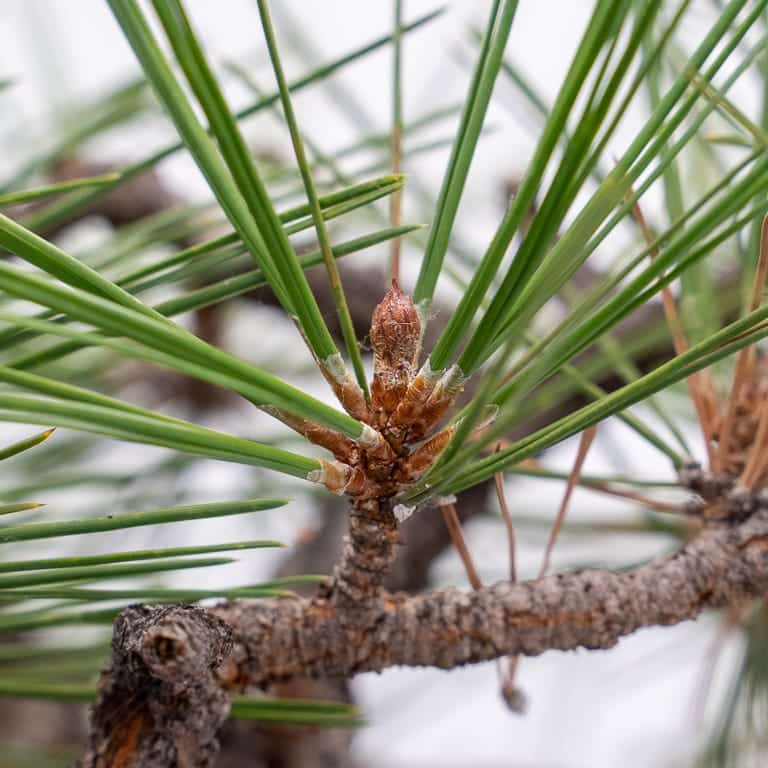
Healthy, but moderately-sized, bud
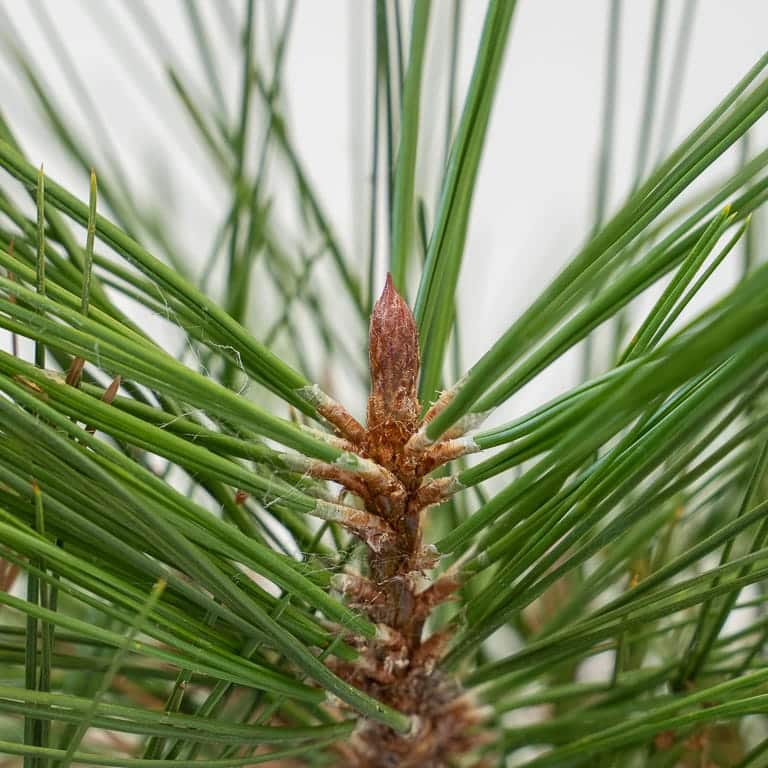
Vigorous bud
One of the more interesting signs of vigor in Jeffrey pine is the presence of back buds. Even though I have yet to prune this tree, lots of back buds have appeared on the stronger branches. Here’s a look at how the weaker branches compare with the stronger branches in terms of lateral, or back buds.
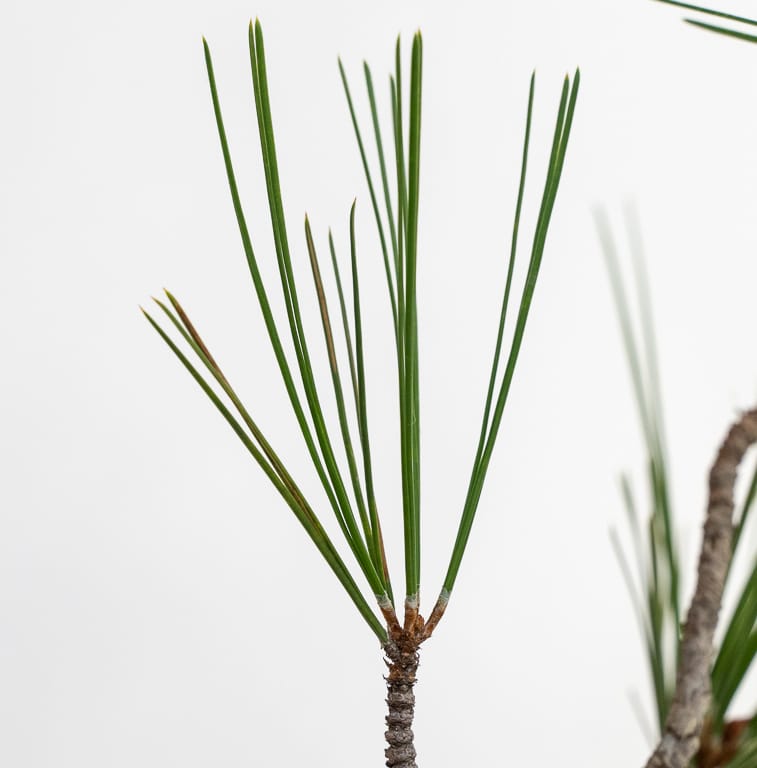
Weak branch – no back buds
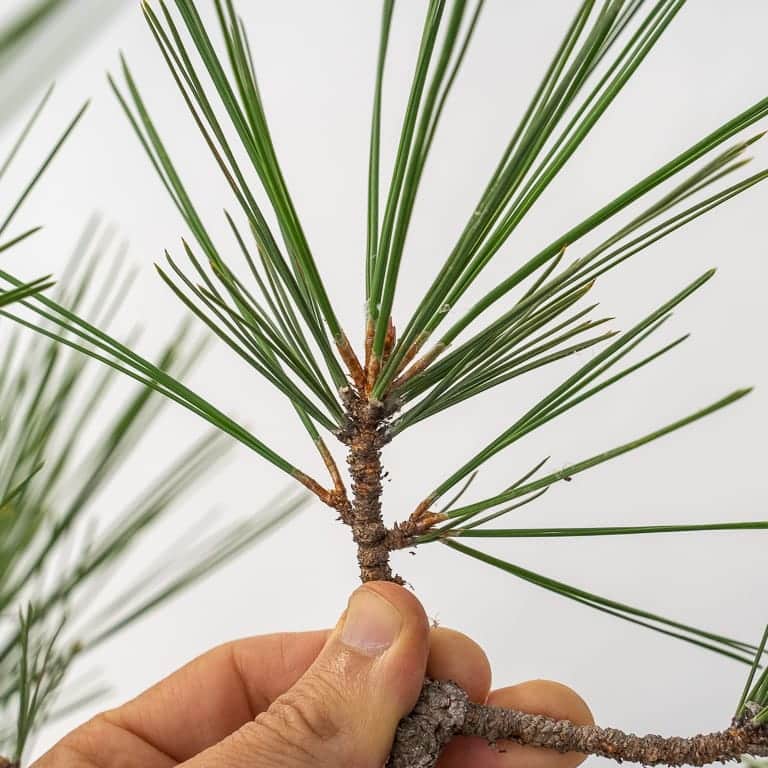
Relatively weak branch with two new back buds
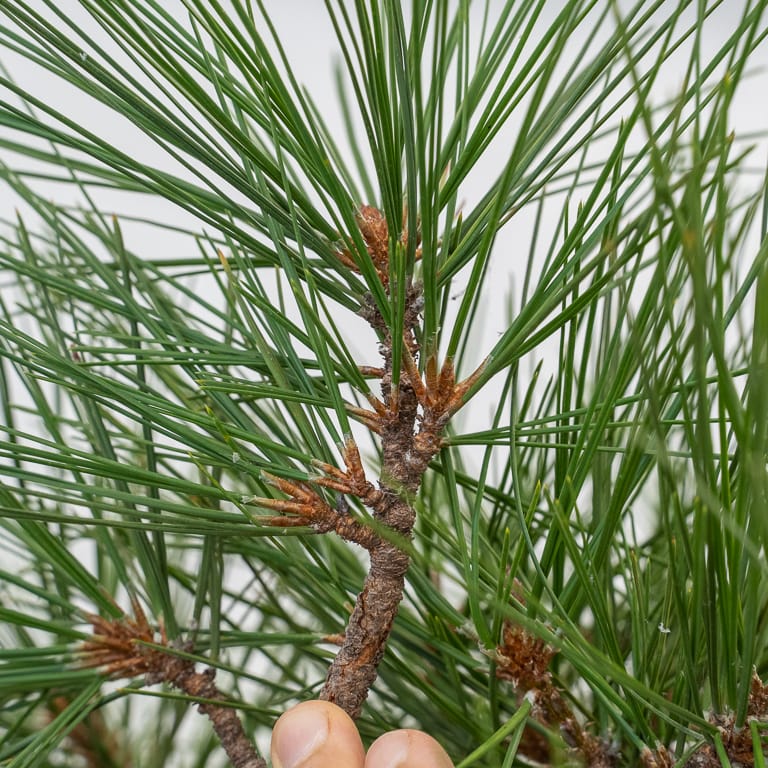
Moderately healthy branch with more developed back buds
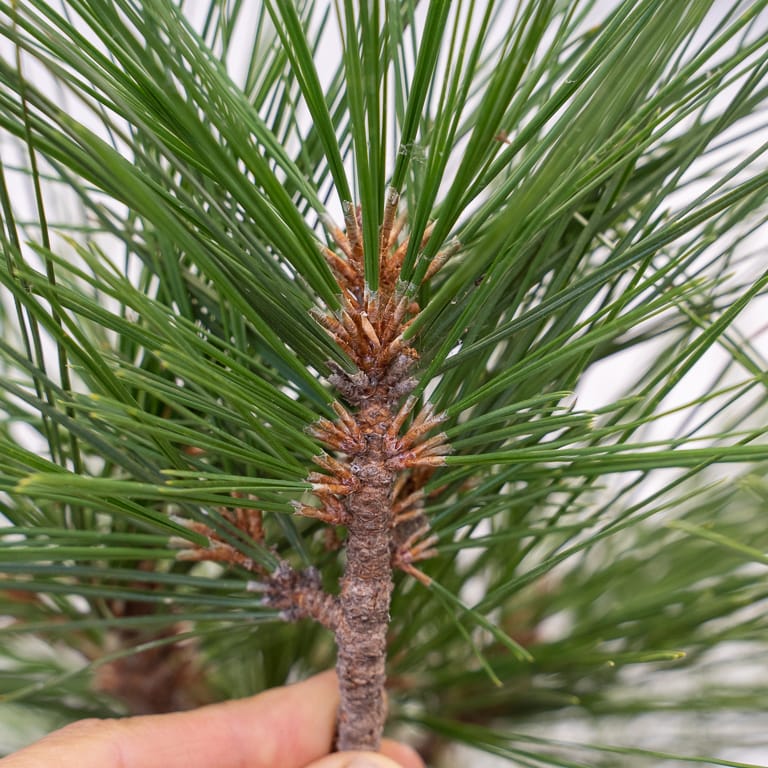
Strong branch with many back buds
The presence of these buds offers a clue as to how Jeffrey pines can develop as bonsai. When the tree quickly regains vigor, it not only produces longer buds and needles, but also encourages lateral buds to form wherever there are lots of needles. The more strong branches the tree has, the more lateral buds it will develop. The lesson: encourage vigorous growth to ramify Jeffrey pines in early stages of development.
Do note, however, that when reinvigorating old pines you risk losing old bark. As branch or trunk diameter increases, old plates of bark can pop off as bark lacks the elasticity it would need to cling to swelling branches. If you notice fresh-colored streaks of bark between the older, grey plates, encouraging additional vigor may lead bark to slough off.
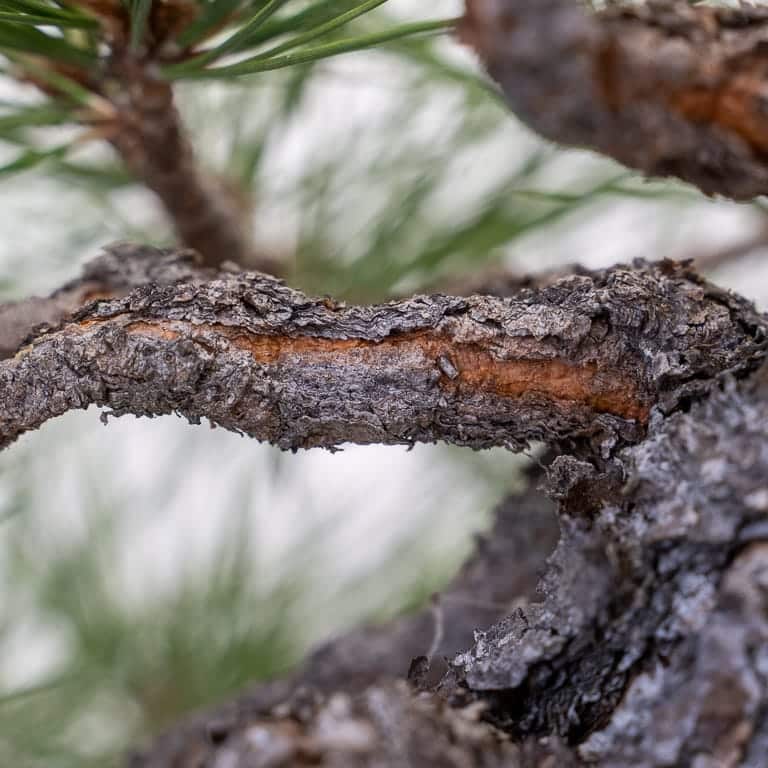
Orange-colored bark on a small branch
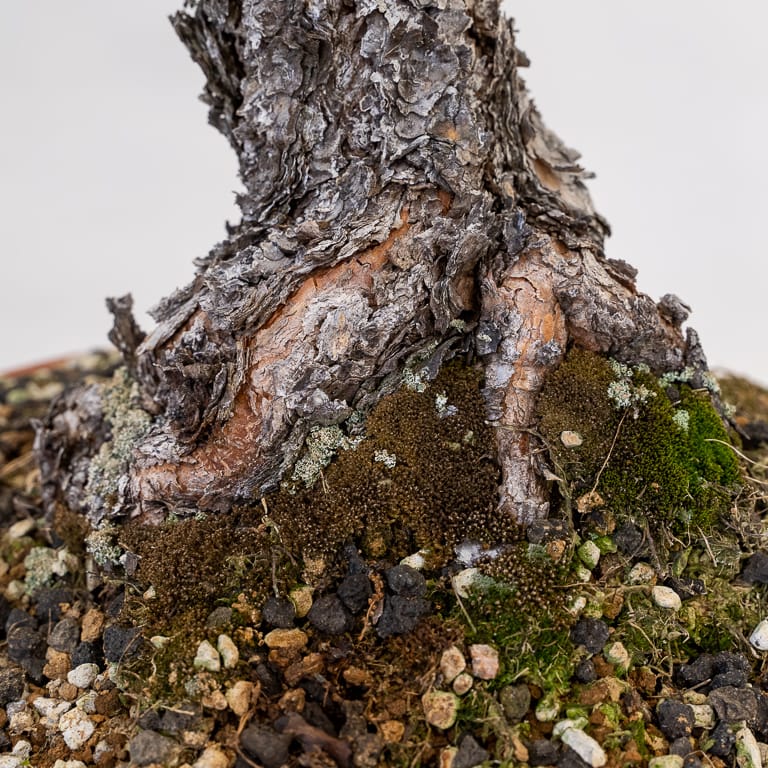
New bark on a swelling root
I don’t expect this tree to grow much more this year as fall is approaching – which brings us back to the old needles.
When the third-year needles turn brown, I go through and remove them all with tweezers or scissors – scissors if the needles are stubborn, and tweezers if they fall away easily.

Old needles on a small branch
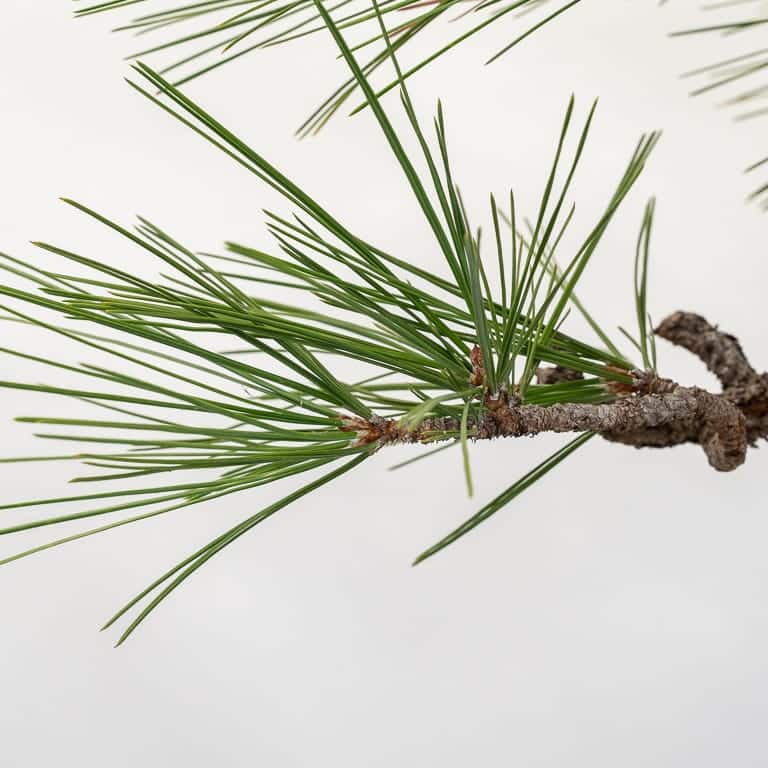
After removing the old needles
Here’s the tree when the clean-up is complete.
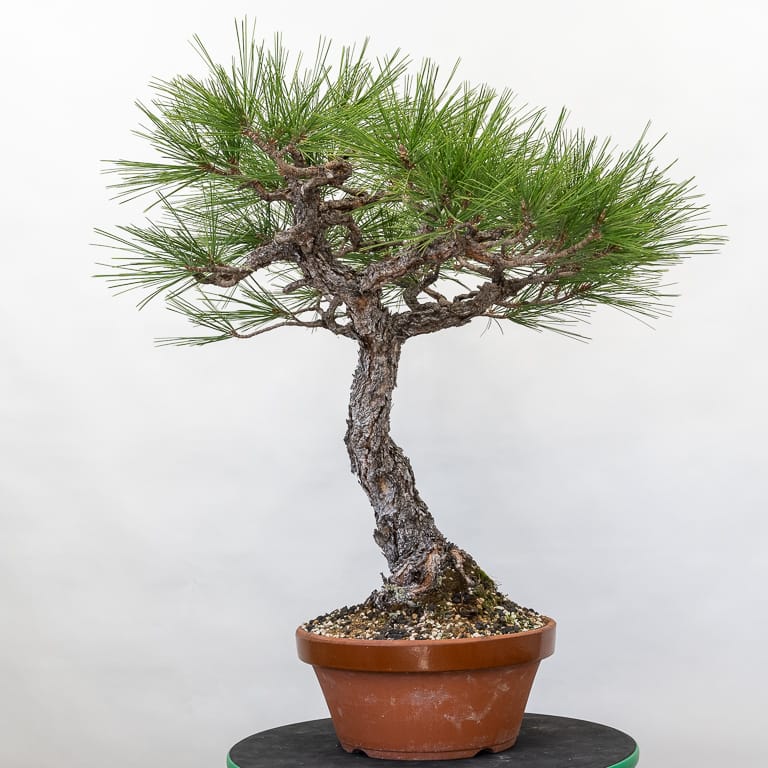
After removing the brown, third-year needles – 30″ tall
Will report back when it’s time for styling.
Subscribe to Bonsai Tonight
New Posts Delivered Every Tuesday and Friday
Ryan says
Here in Colorado we had an unusually snowy and rainy Spring and this caused many of our pines, which had been under the effects of a multi-year drought, put on a healthy amount of growth. As a result, some of my ponderosa pines did what your pine did and popped off old bark, revealing the redder bark beneath. Many very old ponderosa pines bear this “reddish” bark as a sign of age, as they usually only show such colors in their bark once they reach ~100 years of age. It’s funny to see much younger trees showing the same color….except their bark is much thinner than the centenarians.
Jonas Dupuich says
Thanks for the note Ryan – that’s interesting to hear a single “good” season can affect the bark like this. It’s too bad we have to watch out when the colored bark appears – it’s an attractive color.